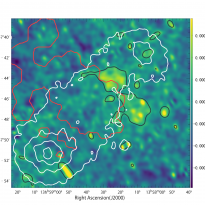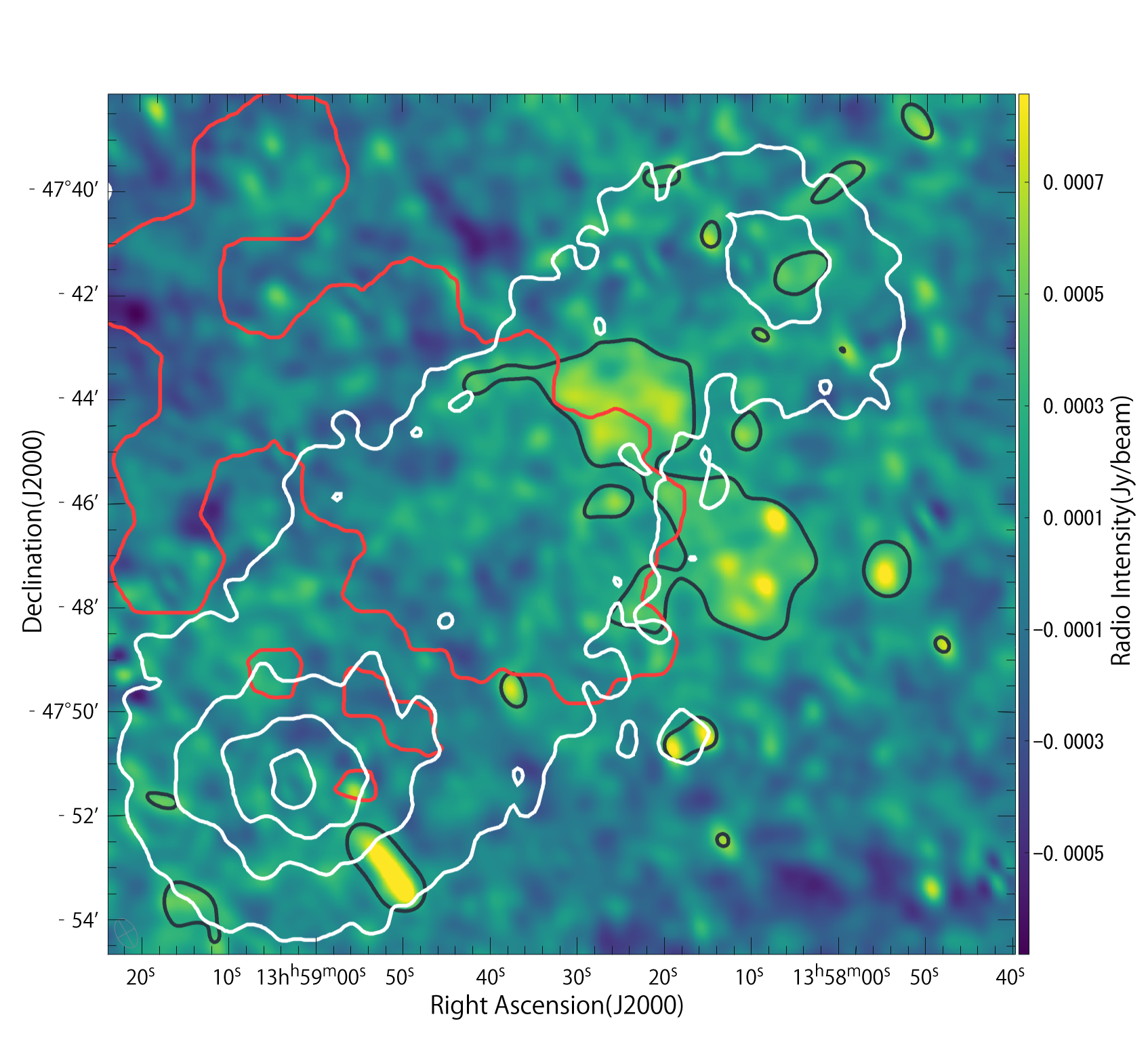Unburying CIZA Galaxy Cluster

“I come to bury CIZA, not to praise him.” (with apologies to Shakespeare - Julius Caesar)
Now astronomers have used a newly upgraded world-leading radio telescope to unbury the radio emissions from a galaxy cluster known as CIZA1359. The signal has until now been buried in noise from a nearby foreground object.
When astronomers study the radio waves from distant galaxy clusters, emissions from foreground objects can bury the faint signals of the distant galaxies. CIZA1359 had been identified by the Clusters in the Zone of Avoidance (CIZA) survey mission as one of the few known galaxy clusters where we can see two sub-clusters in the early stages of the merging. But due to its close proximity to a bright foreground object, no one had ever succeeded in detecting its diffuse radio structure.
As Julius Caesar himself said, “As a rule, men worry more about what they can’t see than what they can.” So Kohei Kurahara at the National Astronomical Observatory of Japan led a team to look for radio waves from CIZA1359 using the upgraded Giant Metrewave Radio Telescope (uGMRT), which offers imaging with exceptional accuracy and an unprecedented range of spatial scale. They succeeded in detecting the diffuse radio structure toward CIZA1359 and identified many radio sources within the cluster.
These results will help in planning observations with next-generation radio interferometers, such as the Square Kilometre Array (SKA). Such facilities will be able to search for more distant and fainter objects, with the potential to unravel intricate details concerning the evolution of galaxy clusters. (Great CIZA’s ghost!)
These results appeared as Kurahara et al. “Diffuse radio source candidate in CIZA J1358.9-4750” in the special issue of the Publications of the Astronomical Society of Japan, of which the printed version was published in February 2023.
Figure

Caption: uGMRT radio intensity distribution map of CIZA1359. The black lines highlight spatially resolved extended sources. Other lines show the x-ray distributions observed by the Suzaku satellite (white lines), and XMM-Newton satellite (red lines)(Credit: Kohei Kurahara).
Links
- NAOJ News Science ⌈Unburying CIZA Galaxy Cluster⌋
- KMI ⌈Exploring the energy flow within the largest shock waves in the universe⌋
- Nagoya University ⌈Exploring the energy flow within the largest shock waves in the universe⌋
CSS not active
JavaScript not active
